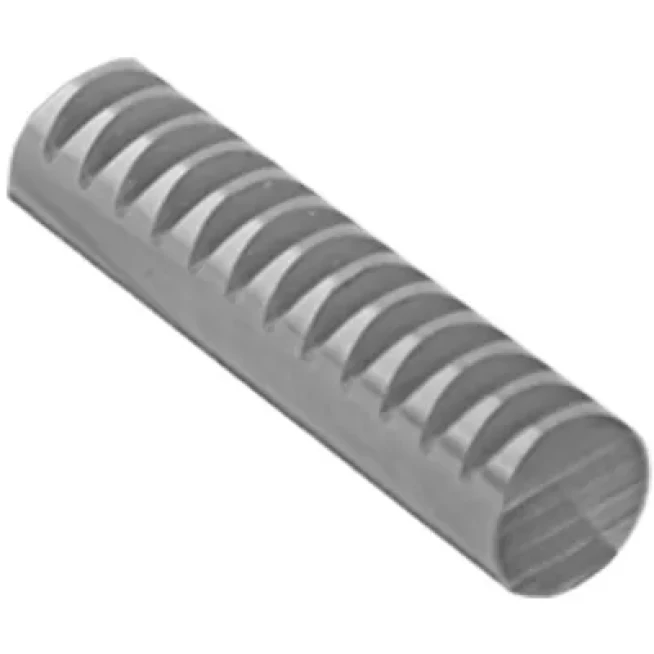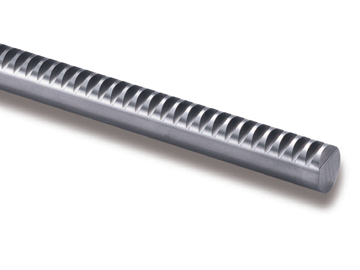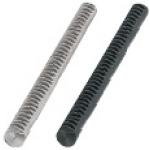Product Description
China Manufacturer Industrial Great Precision C45 Galvanized Surface Round Gear Rack
/* January 22, 2571 19:08:37 */!function(){function s(e,r){var a,o={};try{e&&e.split(“,”).forEach(function(e,t){e&&(a=e.match(/(.*?):(.*)$/))&&1
| Application: | Motor, Electric Cars, Motorcycle, Machinery, Marine, Toy, Agricultural Machinery, Car |
|---|---|
| Hardness: | Hardened Tooth Surface |
| Gear Position: | Internal Gear |
| Manufacturing Method: | Cast Gear |
| Toothed Portion Shape: | Spur Gear |
| Material: | Stainless Steel |
| Samples: |
US$ 9999/Piece
1 Piece(Min.Order) | |
|---|

How does the design of the round gear rack affect its performance?
The design of the round gear rack plays a crucial role in determining its performance characteristics and capabilities. Here’s a detailed explanation of how different design aspects of the gear rack can affect its performance:
- Tooth Profile: The tooth profile of the round gear rack, such as involute or cycloidal, influences its performance. The choice of tooth profile affects factors like load distribution, contact ratio, backlash, and efficiency. Different tooth profiles have varying strengths and weaknesses in terms of noise, efficiency, and smoothness of operation. The selection of an appropriate tooth profile is important to achieve the desired performance and optimize the gear rack’s efficiency.
- Module and Pitch: The module and pitch of the round gear rack determine the size and spacing of the teeth. These parameters affect the gear rack’s performance in terms of load-bearing capacity, speed, and accuracy. A larger module and coarser pitch generally result in higher load capacity but lower precision, while a smaller module and finer pitch provide higher accuracy but may have lower load capacity. The selection of the module and pitch should align with the specific application requirements to achieve the desired balance between load capacity and precision.
- Material Selection: The choice of material for the round gear rack impacts its performance, durability, and resistance to wear and fatigue. Common materials used for gear racks include steel, stainless steel, and synthetic materials like plastic or nylon. Each material has its own set of properties such as strength, hardness, and corrosion resistance. The material selection should consider factors such as the application’s load requirements, operating environment, and desired lifespan of the gear rack.
- Geometry and Dimensions: The geometry and dimensions of the round gear rack affect its performance characteristics. Parameters such as the addendum, dedendum, and tooth height play a role in determining the gear rack’s load capacity, contact ratio, and backlash. The overall dimensions, such as the width and height, influence the gear rack’s compatibility with the mating gear or pinion and the available space within the machinery or equipment. Proper consideration of the gear rack’s geometry and dimensions is crucial for achieving optimal performance and compatibility.
- Surface Finish and Hardness: The surface finish and hardness of the round gear rack can impact its performance in terms of friction, wear, and noise. A smooth and properly finished surface reduces friction and wear, improving the gear rack’s efficiency and longevity. Additionally, the hardness of the gear rack’s surface affects its resistance to wear and fatigue. Proper heat treatment or surface hardening techniques can enhance the gear rack’s durability and performance.
- Accuracy and Tolerance: The design of the round gear rack influences its accuracy and tolerance levels. Precise manufacturing processes and tight tolerances ensure that the gear rack’s dimensions and tooth profiles meet the specified requirements. Higher accuracy and tighter tolerances result in better meshing with the mating gear or pinion, reducing backlash and improving the overall performance of the gear rack system.
By considering the tooth profile, module and pitch, material selection, geometry and dimensions, surface finish and hardness, and accuracy and tolerance, the design of the round gear rack can be optimized to achieve the desired performance characteristics. A well-designed gear rack ensures efficient power transmission, minimal noise and vibration, and reliable operation in various applications.

Can round gear racks be used in automotive applications, and if so, where?
Yes, round gear racks can be used in various automotive applications, providing reliable and efficient motion control. Here’s a detailed explanation of where round gear racks can be utilized in automotive applications:
1. Steering Systems: Round gear racks are commonly used in automotive steering systems, particularly in rack and pinion steering setups. In rack and pinion steering, a round gear rack is connected to the steering wheel through a pinion gear. When the driver turns the steering wheel, the rotational motion is converted into linear motion along the gear rack, causing the wheels to turn. The precise engagement between the gear rack and the pinion gear allows for accurate and responsive steering control. Round gear racks in steering systems contribute to the overall handling and maneuverability of vehicles.
2. Transmission Systems: Round gear racks can be integrated into automotive transmission systems, specifically in manual transmissions. In manual transmissions, gear racks are used in the shifting mechanism to control the movement of gears. By engaging with a gear selector fork, the gear rack facilitates the selection of different gears, enabling the driver to change gears smoothly. The gear rack’s precise tooth profile and meshing with the gear selector fork ensure reliable gear shifting and contribute to the overall performance and drivability of vehicles equipped with manual transmissions.
3. Seat Adjustments: Round gear racks find application in automotive seat adjustment mechanisms. Power seats or manual seats with adjustable features utilize gear racks to enable forward-backward and reclining movements. The gear rack, along with a motor or manual adjustment handle, transforms the rotational input into linear motion, allowing drivers and passengers to customize their seating positions for comfort. Round gear racks in seat adjustment systems provide smooth and precise movement, enhancing the ergonomics and convenience of automotive seating.
4. Sunroof Mechanisms: Round gear racks can be employed in automotive sunroof mechanisms. Sunroofs often utilize gear rack systems to achieve smooth and controlled opening and closing motions. The gear rack, along with a motor or manual mechanism, enables linear translation of the sunroof panel, providing easy access to fresh air and natural light. The precise engagement between the gear rack and the driving mechanism ensures reliable and accurate sunroof operation, enhancing the overall driving experience.
5. Convertible Top Actuation: Round gear racks are used in convertible vehicles to facilitate the raising and lowering of the convertible top. Convertible tops typically employ gear rack systems in conjunction with motors or hydraulic actuators to achieve controlled and synchronized motion. The gear rack translates the rotational input into linear motion, allowing for smooth and precise actuation of the convertible top. Round gear racks in convertible top mechanisms ensure reliable operation and contribute to the functionality and aesthetics of convertible vehicles.
Round gear racks have various applications in automotive systems, including steering systems, transmission systems, seat adjustments, sunroof mechanisms, and convertible top actuation. Their precise motion control characteristics, durability, and reliability make them suitable for enhancing the performance, comfort, and functionality of automotive applications.

How do round gear racks handle variations in load capacity and speed?
Round gear racks are designed to handle variations in load capacity and speed in machinery and equipment. Here’s a detailed explanation of how they address these variations:
- Load Capacity: Round gear racks are capable of accommodating different load capacities based on their design and construction. The load capacity of a round gear rack depends on factors such as the material used, tooth profile, tooth size, and overall dimensions. Manufacturers specify the load capacity ratings for round gear racks, allowing engineers to select the appropriate rack that can handle the expected loads in their specific application. By choosing a round gear rack with the appropriate load capacity, variations in loads can be effectively managed.
- Speed: Round gear racks can handle variations in speed by considering factors such as tooth pitch and tooth engagement. The tooth pitch determines the linear displacement per revolution of the mating gear or pinion. By selecting a suitable tooth pitch, the desired linear speed can be achieved. Additionally, the number of teeth engaged at any given time affects the speed capability. Increasing the number of engaged teeth can distribute the load and reduce the strain on individual teeth, allowing for higher speeds. However, it’s important to consider the trade-off between speed and the load capacity of the gear rack. Higher speeds may require a more robust rack design to maintain stability and ensure reliable operation.
- Lubrication and Maintenance: Proper lubrication and maintenance play a crucial role in handling variations in load capacity and speed. Lubrication helps reduce friction and wear between the teeth of the gear rack and the mating gear or pinion, ensuring smooth operation and extending the lifespan of the components. Regular maintenance, including inspection and lubrication, allows for early detection of any issues that may affect load capacity or speed. By following recommended maintenance practices, variations in load and speed can be effectively managed, ensuring optimal performance and longevity of the round gear rack.
- System Design and Control: The overall system design and control also contribute to handling variations in load capacity and speed. Engineers consider factors such as gear ratios, motor selection, and control algorithms to optimize the performance of the gear rack system. By appropriately sizing and configuring the system components, variations in load and speed can be accommodated. Additionally, advanced control techniques such as feedback control and velocity profiling can be employed to regulate speed and manage load fluctuations, ensuring smooth and precise operation of the round gear rack system.
By considering factors such as load capacity, speed, lubrication, maintenance, system design, and control, round gear racks can effectively handle variations in load capacity and speed. Proper selection, maintenance, and system design practices help ensure reliable and efficient operation of machinery and equipment that incorporate round gear racks.


editor by CX 2024-04-11